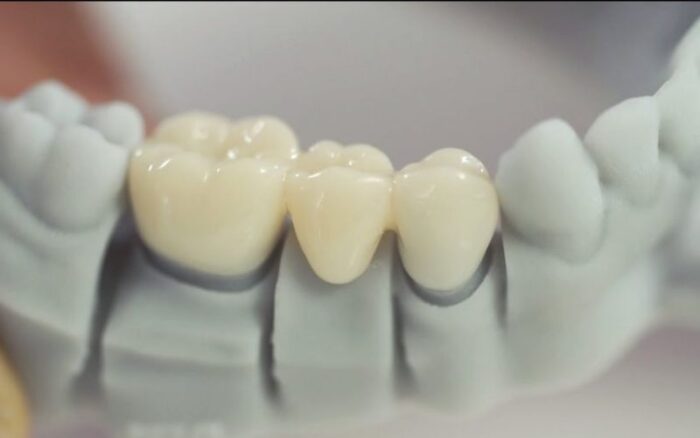Recent Report Highlights the Continued Importance of 3D Printing in Dentistry

Dentistry is providing an ever-increasing market for 3D printing. According to a recent report from BlueWeave Consulting on the dental 3D printing market, it is projected to be worth $12.18 billion USD by 2028. The report highlights the needs of an aging population and rapid technological advancements. In short, patients need treatment- and 3D printing can supply it. However, demand is not solely for the treatment of debilitating conditions. It is important to recognize the growing demand for esthetic dental treatments to improve appearance.
First, one reason for this growth is the clear demand. Esthetics and dentistry are inextricably linked and it is difficult to separate purely esthetic from purely practical procedures. Indeed, according to one contributor to the British Dental Journal, ‘there is no such thing as a non-cosmetic dentist’. The effect of issues such as crooked, stained or broken teeth on self-esteem and confidence are well documented. Furthermore, visually imperfect teeth may have been acceptable years ago in the way they are sometimes not today. In the US, a myriad of people from Hollywood celebrities to the 77-year old serving president have had observable dental treatment, giving a youthful and healthy appearance. Increasingly, patients follow these examples and seek aesthetic solutions. As demand for dentistry increases, this is where 3D printing comes in.

3D printed dental arch model. Photo credit: dentalnews.com
CAD and CAM were pioneered in dentistry by Dr François Duret. In 1980, he purchased his first patent for CadCam technology. In 1985 in Paris, he made the first crown using this method. CAD and CAM involves the collection of non-digital data, which is then converted into a digital format on a computer and used to manufacture a physical model. This is known as a digital workflow. 3D printing in dentistry has grown greatly from these beginnings and continues to serve many advantages when applied to the field.
Application of Additive Manufacturing in Dentistry
As these become increasingly popular, so too does 3D printing as a way of producing rapid and patient-specific solutions. According to this latest report, the most popular application in the market is prosthodontics (the creation of artificial teeth). Orthodontics and implantology also hold significant market share. They also note that 3D printing is used in dentistry to create patient-specific models of complex geometry.
Furthermore, dentists can create implants and orthodontic retainers, as well as models to illustrate the mouth. Additive manufacturing is faster than traditional methods and produces little waste, as CAD means the machine creates the precisely desired product. Increased efficiency can mean one dentist visit rather than several, which is convenient and beneficial to anxious patients. For these procedures, the report notes that the most popular technique in terms of market share is VAT photopolymerization, but FDM and SLS are also common.

Scan of mouth has been converted into a 3D model of dental arch
There are of course limitations to the use of 3D printing in dentistry. The report mentions that there is a shortage in workforce trained in 3D printing. Within clinics the individual must understand the medical requirement- the demand- and be trained in AM in order to produce the solutions. In short, they must know what is needed and how to make it. The COVID-19 pandemic also caused labor shortages due to lockdowns and limited opportunities for training, which further limited growth. Initial machinery costs are often high, therefore 3D-printed treatment is limited to those willing to pay for it. This means that those who are able to afford optional cosmetic treatment are more likely to be able to afford a clinic which implements 3D solutions. Though, considering the cost-effectiveness of 3D printing in general, it seems likely that the technology will become even more widespread. To learn more, an overview of the full report can be found HERE.
What do you think about the link between aesthetic procedures and 3D dental solutions? Do you think it is the factor which contributes the most to the growth of the dental 3D printing market? Let us know in a comment below or on our LinkedIn, Facebook, and Twitter pages! Don’t forget to sign up for our free weekly Newsletter here, the latest 3D printing news straight to your inbox! You can also find all our videos on our YouTube channel.






